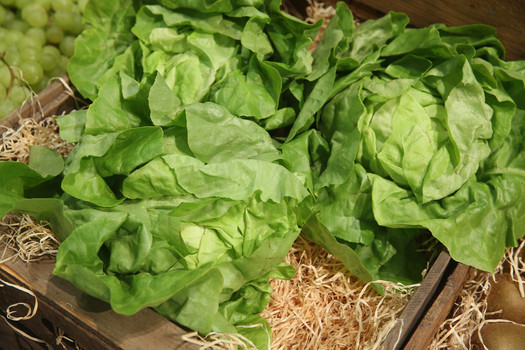Lettuce is a rich source of antioxidants; however, not all varieties of the leafy vegetable have the same effect. A group of researchers at the Department of Plant Biology and Ecology of the UPV/EHU’s Faculty of Science and Technology found the color of a leaf of lettuce determines how fast nutrients are able to act on the human body.
For example, according to the results of this study, red-leaf lettuce has antioxidants that react faster than lettuce with green leaves.
Lettuce is an abundant source of antioxidants and other compounds that are healthy to humans, including anthocyanins, flavonoids, and phenolic acids. Lettuce is also rich in vitamin A and C.
Antioxidants are noted to be able to provide a long-term defense against molecules that can generate diseases or cause damage to healthy human cells. The molecules that cause damage are also referred to as free radicals. Free radicals are not only capable of causing serious diseases; they have an effect on the human aging process, as well.
In 2011, researchers of the UPV/EHU and the University of Pisa, Italy began their study of compounds found in three lettuce varieties: the red-leaf Oak Leaf, the semi-red-leaf Marvel of Four Seasons, and the green-leaf Batavia.
Researcher found that water-soluble, green-leaf lettuce contains antioxidant compounds that are active at an intermediate and slow speed. Red-leaf lettuce has compounds with intermediate and rapid kinetics, and the semi-red-leaf has three kinds of compounds, that become active at a swift, intermediate, and slow rate.
Researcher observed the compound kinetic behavior of all three varieties of lettuce using Electron Paramagnetic Resonance (EPR) techniques.
Lead researcher, Dr. Usue Pérez-López briefly explains the process to University of the Basque Country. Dr.Pérez-López says, “The fact that there are compounds that act at different speeds does not mean that some are better or worse than others. If we eat foods that can generate free-radical activity, there will be some compounds that act to eliminate them more quickly. But at the same time, it is also important that our bodies should acquire foods with antioxidants that have slower kinetics so that the latter will continue to act over a longer period of time. That is why people say that it is very interesting to mix different types of lettuce because they have different, complementary characteristics.”
The team of researchers is now trying to determine ways to increase the antioxidant properties of lettuce. They want to see if increasing CO2 levels, or intensifying lighting, and watering lettuce varieties with salinated water will boost the antioxidant properties of the varieties of lettuce.
Dr. Pérez-López points out the following: “What matters in this process is not to lose productivity, and that is why we apply short-intensity stresses. With excessive stress, we could reach a point in which plant growth is reduced, and we are not interested in achieving greater quality at the cost of a reduction in size. The aim is to maintain production and achieve greater quality in this production.”
This study on lettuce and the release of antioxidants was published in the Journal of Agricultural and Food Chemistry.















